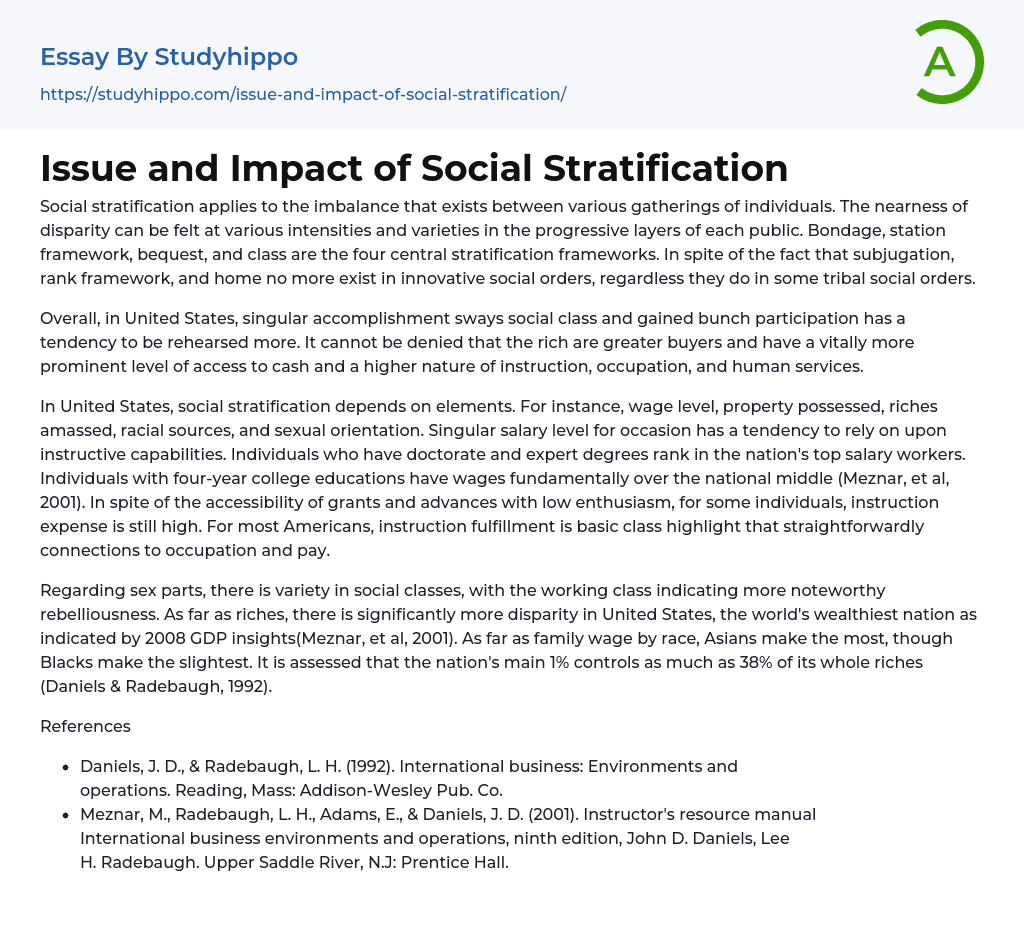Social stratification refers to the disparity that exists among different groups of people. This imbalance can be experienced in different degrees and forms within the successive layers of a society.
The four main stratification frameworks are bondage, station framework, bequest, and class. Although subjugation, rank framework, and home no longer exist in modern societies, they still exist in some tribal societies. Overall, in the United States, individual achievement influences social class and acquired group membership tends to be practiced more. It cannot be denied that the wealthy are bigger consumers and have a significantly greater level of access to money and a higher quality of education, occupation, and healthcare. In the United States, social stratification is based on factors.
Various factors, such as wage level, property ownership, accumulated wealth, racial background, and gender, can have an impact on an individual's
...income. Educational qualifications also play a significant role in determining income. People with doctoral and master's degrees typically earn the highest salaries in the country. Similarly, individuals with bachelor's degrees earn wages that are significantly higher than the national median (Meznar et al., 2001). However, despite scholarships and low-interest loans being available, education fees remain costly for many individuals. Completing one's education is considered a crucial societal characteristic for most Americans because it directly correlates with employment and income.
There is variation in social classes when it comes to sex parts, and the working class displays more significant rebelliousness. In terms of wealth, the United States has much greater inequality. According to 2008 GDP statistics (Meznar, et al, 2001), the United States is considered the world's wealthiest nation. When it comes to family income by race, Asians ear
the highest, while Blacks earn the lowest. It is estimated that as much as 38% of the entire wealth of the country is controlled by its top 1% (Daniels & Radebaugh, 1992).
References
- Daniels, J. D., ; Radebaugh, L. H. (1992). International business: Environments and operations.
Reading, Mass: Addison-Wesley Pub. Co.
Prentice Hall in Upper Saddle River, N.J. publishes the instructor's resource manual for the ninth edition of International business environments and operations, which is authored by John D. Daniels and Lee H. Radebaugh.
- Accomplishment essays
- Goal Setting essays
- Code of Ethics essays
- Conflict essays
- Dress Code essays
- Human Resources essays
- Organizational Behavior essays
- Performance essays
- Recruitment essays
- Safety essays
- Anthropology essays
- Audience essays
- Charity essays
- Cultural Competence essays
- Emile Durkheim essays
- Gender Roles essays
- Generation essays
- Globalization essays
- Interpersonal Relationship essays
- People essays
- Race essays
- Social Change essays
- Social Class essays
- Social Movement essays
- Social Science essays
- Social Status essays
- Social Stratification essays
- Society essays
- Sociological Imagination essays
- Sociological Perspective essays
- Sociological Theories essays
- Stereotypes essays
- Web Dubois essays




